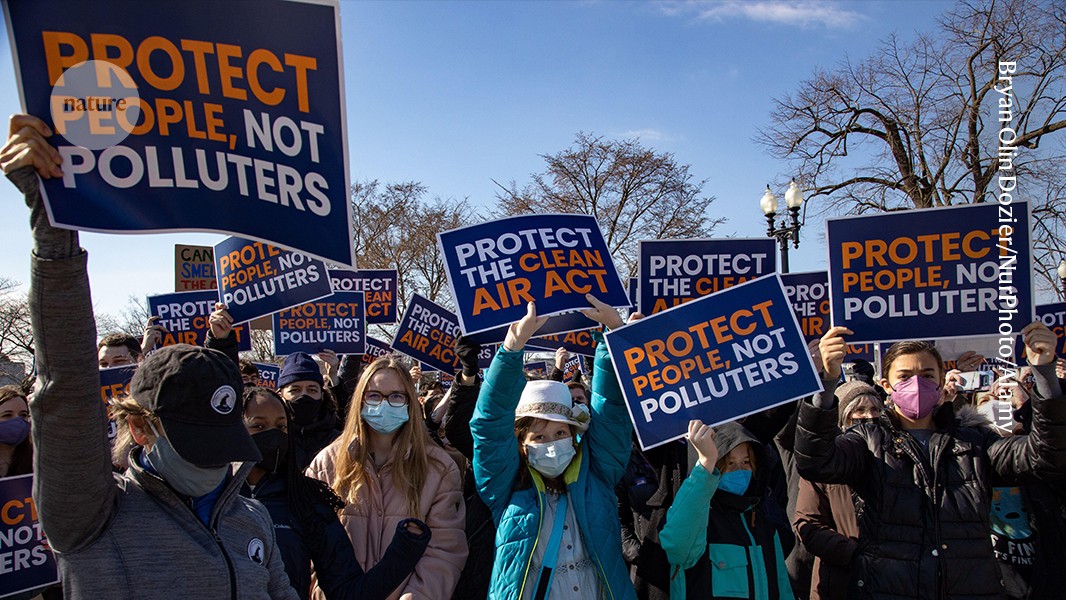Here is the article as pdf.
Huge planetary problems were fixed in the past, yielding lessons for the current climate crisis — yet this time a solution is justice - [Book review]
Solvable: How We Healed the Earth, and How We Can Do It Again Susan Solomon Univ. Chicago Press (2024)
From lead pollution to the hole in the ozone layer and climate change, Earth is no stranger to human-made — often, man-made — global disasters.
In Solvable, atmospheric chemist Susan Solomon describes how high-income countries, and the United States in particular, have repeatedly inflicted incredible amounts of damage on people and ecosystems. She relates the long and difficult struggles that concerned individuals — often from marginalized groups — faced in trying to convince governments to stop industries from destroying lives and the planet in the pursuit of profit. Solvable is a harrowing read, but Solomon is an engaging writer and there is a lot to learn in this book about the environmental crises of the past century.
Solomon relates the story of US marine biologist Rachel Carson, who rang alarm bells about persistent pesticides such as dichlorodiphenyltrichloroethane (DDT) in her eloquent book Silent Spring (1962). Now that we know just how harmful these pesticides are, it is jarring to read how difficult it was to stop their use.
Carson described how falcons and other birds of prey started to lay eggs with thinner shells, then almost no eggs at all; various other bird populations shrank markedly; DDT in mammals led to the development of tumours and caused sterility. Although the overwhelming evidence for the effect of DDT on animals that Carson presented was independently confirmed by the then US president John F. Kennedy’s own science advisory council, Carson was belittled and portrayed as a hysteric by politicians and the media.
This playbook of deliberate ignorance of the scientific method, disinformation and a hefty dose of misogyny is all too familiar to those advocating for climate justice today.
In the United States, it took a non-governmental organization, the Environmental Defense Fund, and a few highly publicized lawsuits to ban DDT in 1972 — seven years after Carson’s death. Others followed suit, slowly, including in the European Union with partial bans from 1978 and the United Kingdom in 1984.
Yet, the chemical industry continued to manufacture and export DDT to countries that lacked regulation, such as those in Africa and southeast Asia. A global limit was placed on DDT use in 2004 — when the Stockholm Convention on Persistent Organic Pollutants came into force. It’s hard to assess adherence, however, because there’s little monitoring.
Geopolitical inequities
In another parallel with the climate crisis, exported DDT found its way back to nations that had banned it, through global supply chains, such as those involved in importing fashion goods from Asia, which often rely on farms that use DDT to grow cotton. Similarly, by consuming goods produced in Asian nations, European countries are exporting their production of carbon dioxide emissions, as well as exploiting cheap labour.
As inexpensive, practical and short-lived alternatives have been found, DDT use is slowly fizzling out. As a result of the bans, populations of peregrine falcons (Falco peregrinus) in the United States and Europe are recovering. Solomon takes hope from this, even though she points out that the alternatives, such as neonicotinoids, are not harmless either. Because of them, bees are now dying out.
Lead additives in petrol and paint are another example of policymakers and industry dragging their feet. Solomon highlights how, in the 1920s, Thomas Midgley Jr, a chemist at the US automotive company General Motors (GM), discovered that adding tetraethyl lead to petrol increased the efficiency and lifespan of internal combustion engines. The health hazards associated with lead were well known — even the ancient Romans had realized, centuries before, that drinking wine from lead-lined pottery caused poisoning. Yet, GM’s compound, marketed under the trade name Ethyl, became widely used.
Lead contaminated the environment and caused serious public-health issues, affecting the brains and nervous systems of many children, causing comas, convulsions and even deaths. From the early 1960s, citizen groups demanded change, citing strong scientific evidence. Yet, policymakers didn’t feel compelled to stop the use of lead in paint and petrol for more than a decade. The US Environmental Protection Agency limited the amount of lead allowed in petrol in 1973. Although the harm such fuels caused — exacerbated by the increasing number of vehicles on the road — was known, they were only fully banned in the 1990s.
Lead-based house paints were banned in 1978 in the United States. Yet, even today, some people are still exposed to lead in old, peeling paints. Similar to climate change, it is often Indigenous communities, people of colour and other marginalized groups who are disproportionately paying the price, with their health and lives, for the decades of profits that have enriched a few in the petroleum industry.
Within a decade, now at the Frigidaire division of GM, Midgley had turned his attention to refrigerants and was involved in the creation of chlorofluorocarbons (CFCs), particularly Freon. CFCs were initially celebrated for their non-toxic, non-flammable properties, which made them ideal, or so it seemed, for use as coolants in refrigerators and as propellants in aerosol sprays. In the mid-1970s, it became apparent that these compounds break down at cold temperatures and react with ozone.
Over the next 15 years or so, CFCs created a massive hole in the ozone layer that protects Earth and its inhabitants from dangerous ultraviolet radiation. Rates of skin cancer rose. In what Solomon, rightly in my view, sees as an outstanding success of international collaboration, leaders around the globe agreed in the 1987 Montreal Protocol to phase out CFCs. The ozone hole is now closing. But, once again, this phasing out was planned to be very slow, and only sped up when CFCs were replaced with safer alternatives, in the mid-1990s — more than a decade after their harms were known, and only after companies making and using them had found a profitable alternative.
For Solomon, all these examples show that change happens when impacts are personal, perceptible and practical solutions are available — “the three p’s”. For the climate crisis, in her view, the three p’s have been met: its devastating consequences are being felt around the world and renewable energy has become affordable. Thus, she concludes, we can “do it again”.
Broader solutions
I love Solomon’s optimism and agree that it is important to show that the climate crisis is solvable. Yet, as a climate scientist and philosopher, I don’t quite share her outlook. Each struggle she explores, from pesticides and smog to lead in paint and petrol, demonstrates just how keenly policymakers listen to industry — over other people and living things.
None of these cases were solved by overwhelming scientific evidence, or public concern and outcry. Each time, the industry responsible let go of a harmful product (such as DDT) only once it was sure to make a profit from selling its substitutes (other pesticides) — a strategy it could implement owing to its immense lobbying power in governments. But to solve the climate crisis, technological substitutions won’t be enough.
The harms of persistent pesticides were known long before governments banned them.
Substituting every internal combustion engine with an electric vehicle is not sufficient, neither is replacing coal with solar energy: energy demand needs to fall, too. The consequences of climate change are already very dire. Unlike the issues with the ozone hole or peregrine populations, they will not go away once we stop burning fossil fuels.
Ecological restoration is essential. It includes the sustainable management of forests and rivers, as well as changes in agricultural practices to focus less on livestock and more on diverse, drought-resistant crops. These are not just technical issues that can be implemented by one industry. They require an innovative approach to environmental management, through more decentralized industries and wider participation. The industries that profit from exacerbating the climate crisis will not be the same ones that will profit from change. Ultimately, the justice issues that have been set aside in the more-limited solutions of previous planetary problems — which had inserted technological substitutes into an untouched business model — cannot be ignored any longer.
Solvable is essential reading. I am convinced that Solomon is right: the climate crisis is solvable and this fight does have parallels with previous global challenges. But to address — or rather, redress — the climate crisis, any solution must have human rights at its heart, instead of the continued profits of industries.


